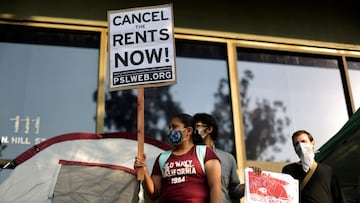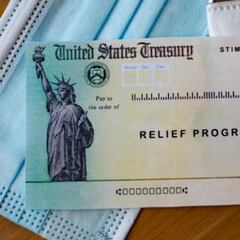Golden State Stimulus Check: What is the “California Comeback Plan” and who is eligible?
Gavin Newsom announces a historic budget surplus for California and encourages the legislature to take up a new plan that would send stimulus checks to 80% of residents.


As California prepares the budget for the coming year, the government announced an estimated budget surplus of 75.7 billion dollars. This surplus does not account for the additional federal funds that will be sent to the state to combat the health and economic impacts of covid-19.
On Monday 10 May, Governor Gavin Newsom of California announced that his administration is proposing to expand the income eligibility threshold to receive “Golden State” stimulus checks. The governor announced on Twitter that “2 out of every 3 Californians will now benefit from a stimulus check of at least $600. And families with kids will now get an additional $500.” This would be the biggest tax rebate by a state in US history.
NEW: CA will be expanding the Golden State Stimulus to middle class families -- creating the biggest state tax rebate in US history.
— Gavin Newsom (@GavinNewsom) May 10, 2021
2 out of every 3 Californians will now benefit from a stimulus check of at least $600. And families with kids will now get an additional $500.
In light of the surplus, the governor is asking the state legislature to pass the “California Comeback Plan” which includes $12 billion to send direct cash payments to 80% of tax filers.
The plan would also allocate $5.2 billion dollars for rental assistance to eliminate the rental back pay dating back to April 2020. This funding would be targeted towards “low-income Californians” to help them “pay back 100 percent of their back-rent, their rent for the months to come.” Additionally, the plan includes $2 billion to pay off utility payments including gas, electricity, and water.
The California Comeback plan provides immediate relief to those who need it most.
— Office of the Governor of California (@CAgovernor) May 10, 2021
➡️Golden State Stimulus checks to 2/3 of Californians - a $12 BILLION tax rebate
➡️Largest statewide renter assistance program in the U.S.
➡️Billions to help pay utilities https://t.co/roCOuHOhSg
Expanding eligibility for the Golden State stimulus check?
Before the expansion, low-income California residents making less than $30,000 a year were eligible. Today the governor’s administration announced that the income limit would be increased to $75,000. Each family would be eligible to receive a $600 payment and additional payments valued at $500 for those with children.
Related stories
In responding to questions from the media on how immigrant families will be able to benefit from the additional funds, the governor acknowledged the work of undocumented workers saying, “One group of residents in this state who did not dial homesick [...], those are our front line workers, our essential employees, many of them from mixed-status families and many without documentation. They were left out of the federal support, they will not be left out of the support coming from the state."
When could the payments be sent?
The payments will need to be approved by the California legislature which will hear about the California Comeback Plan in detail on Friday.

